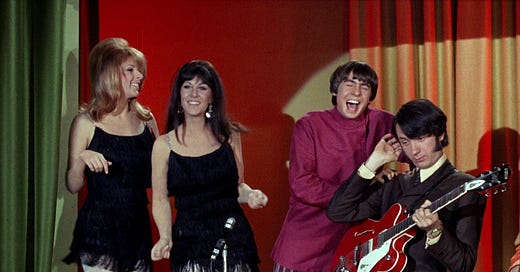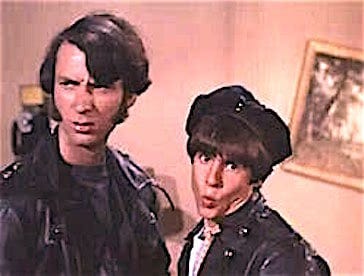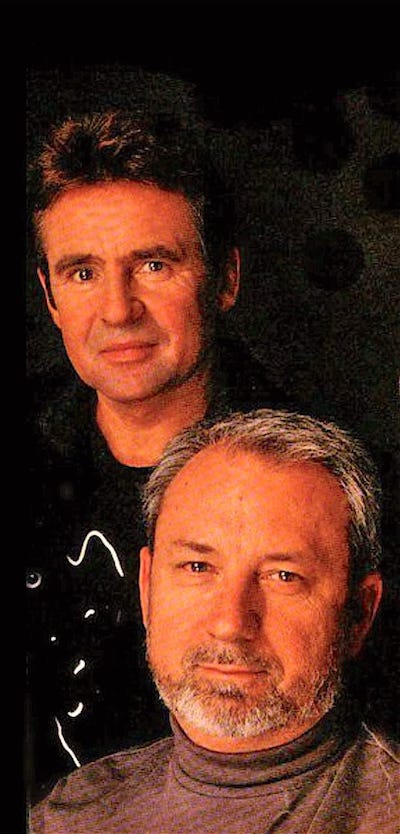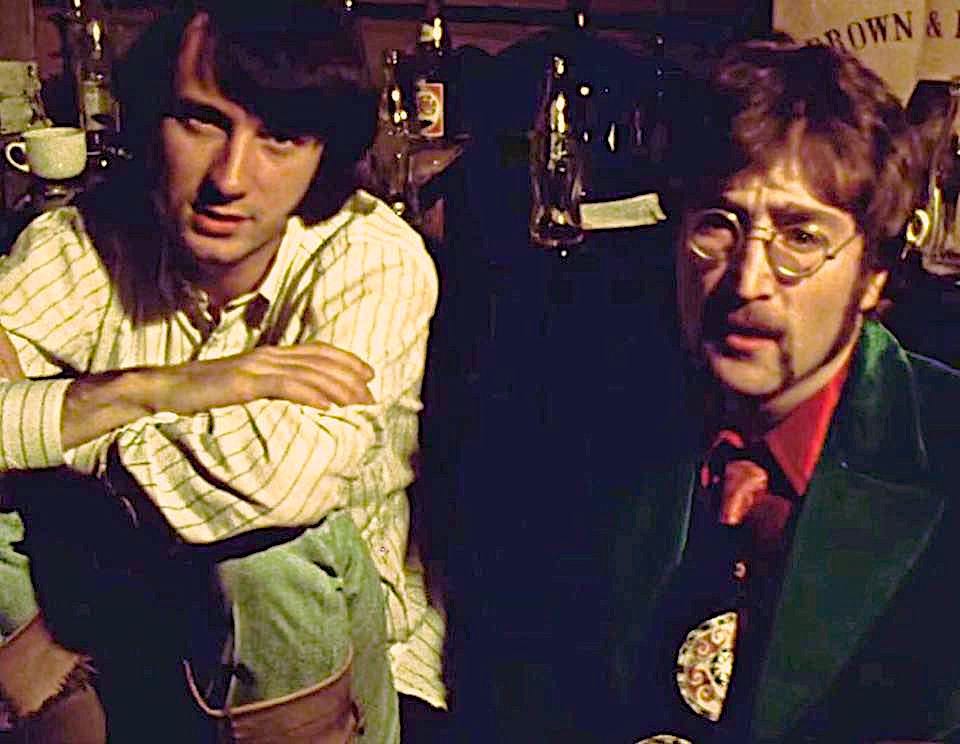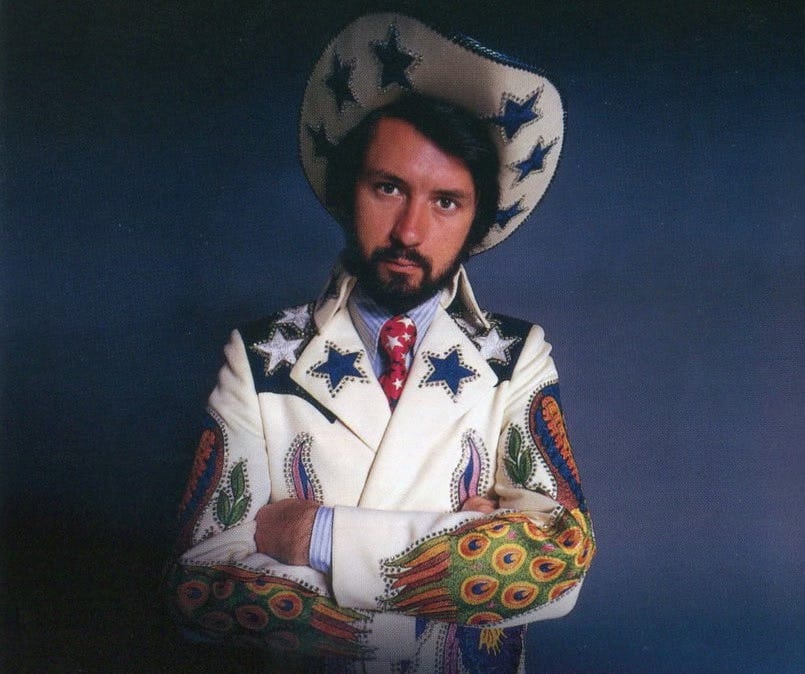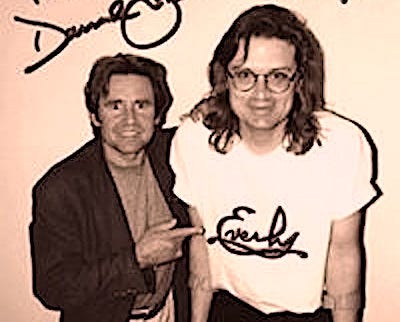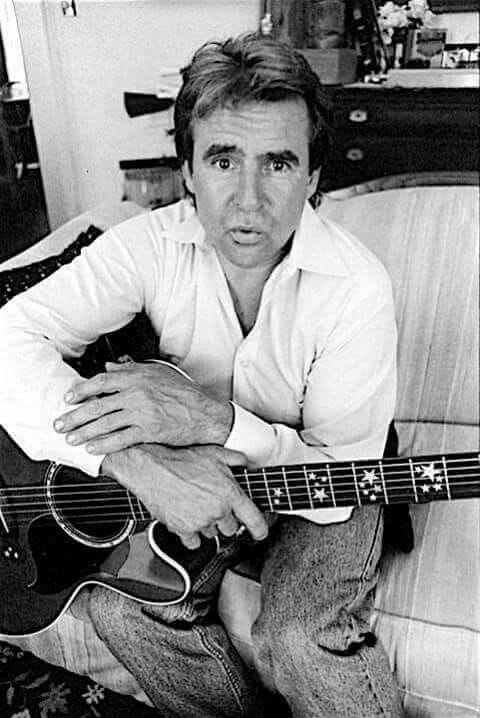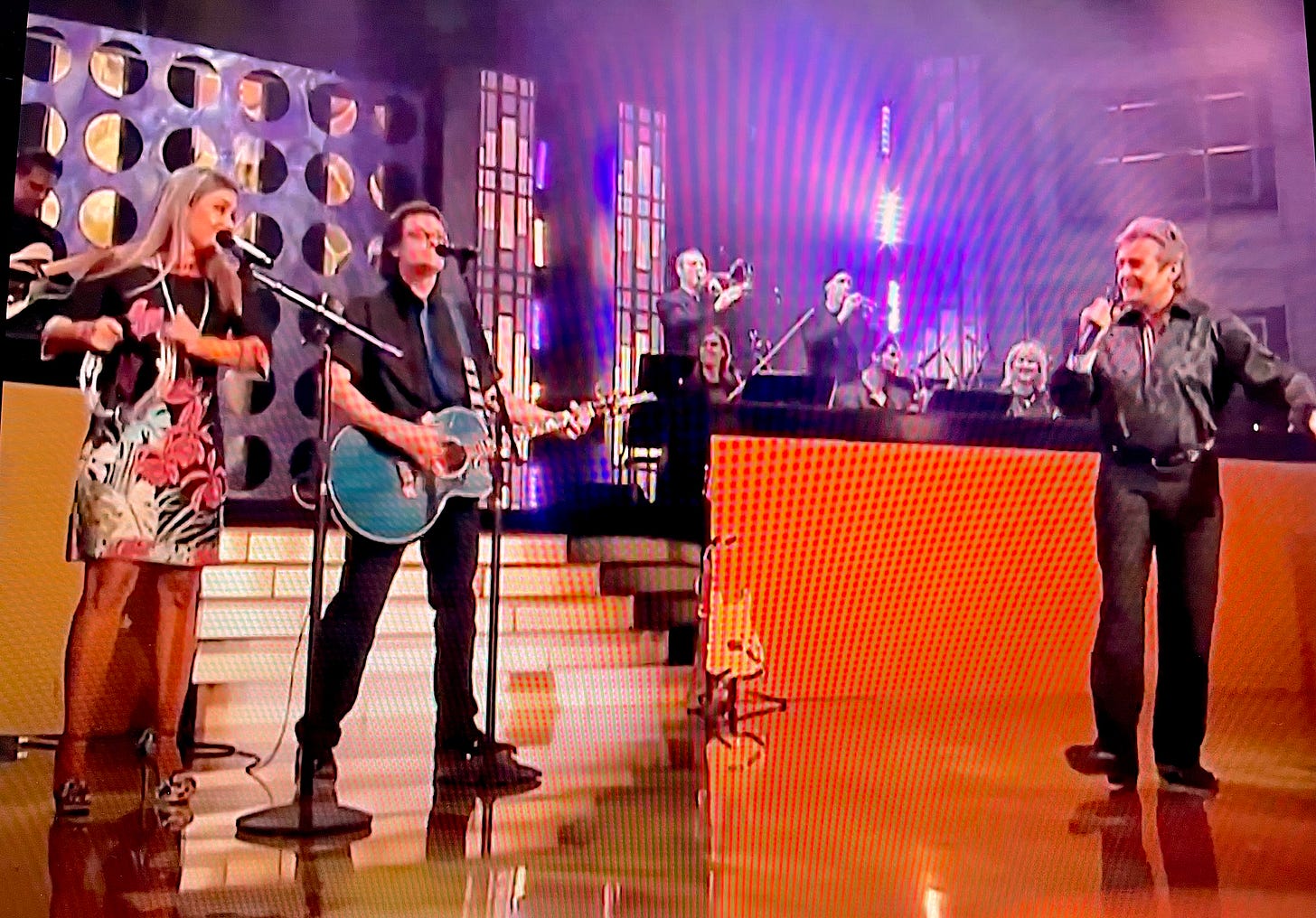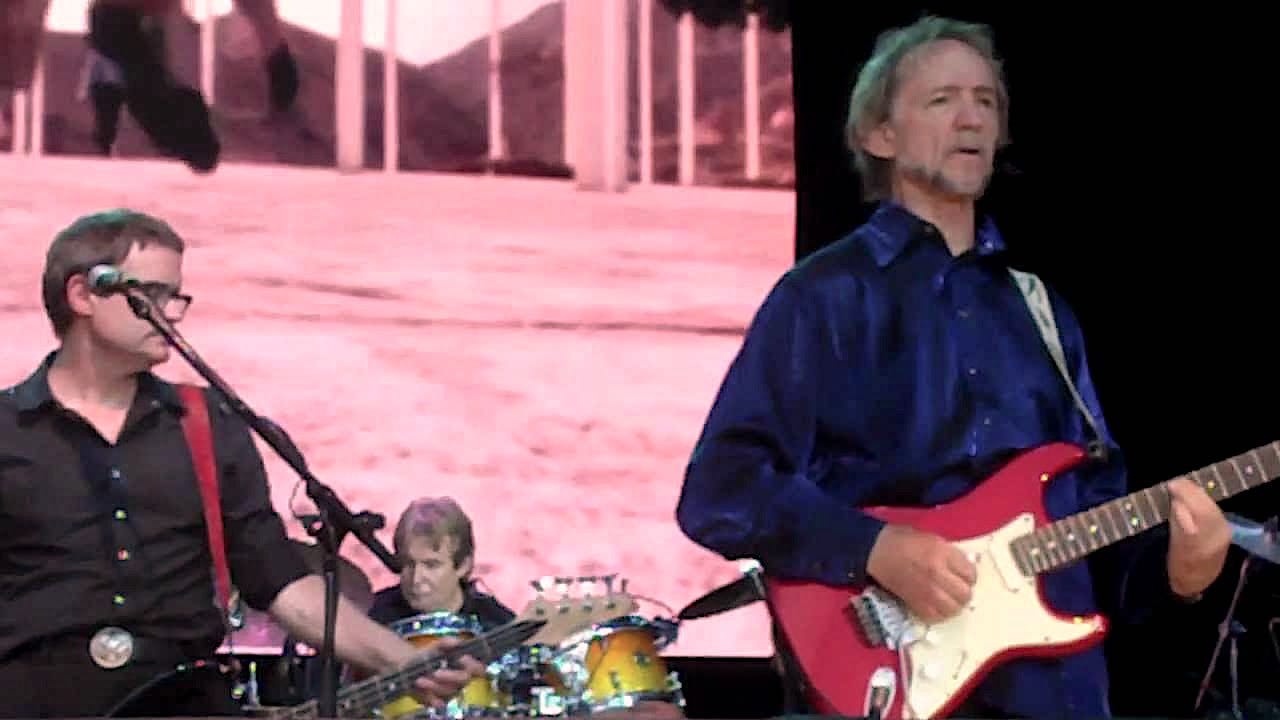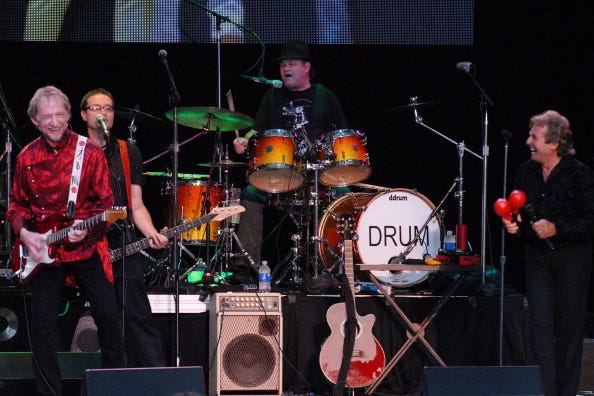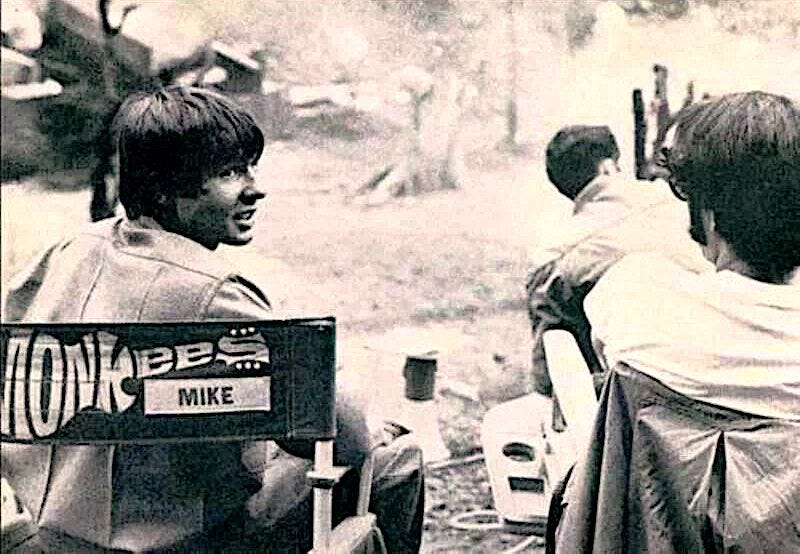Davy Jones & Michael Nesmith: Two Monkees, Same Birthday
Tales (or tails) of 2 Monkees and how talents collide
Happy heavenly birthday to David Jones and Michael Nesmith, born same day different years, and a study in how seemingly disparate talents collide.
They were paired and will be forever enshrined in The Monkees, the 1960s made-for-TV pop/rock band framed in multi-media, comedy, and music—what John Lennon called “the rock’n’roll Marx Brothers.”
Davy’s contract with Colgems shoe-d him in to be the primary actor for The Monkees, which joined him to another actor who could play music (Micky Dolenz) and 2 musicians who could act (Mike Nesmith and Peter Tork). Davy was already a Broadway veteran and teen idol who was a “triple threat,” born to dance, tell endless jokes, and sing countless songs—the consummate rock’n’roll vaudeville entertainer. Then came auditions for “Ben Franks types,” Franks being an L.A. diner where young hipsters hung out. Along came Mike, the reluctant actor-to-be and evocative songwriter who’d go on to become a trail-blazer of Americana and the disciplines of multi-media.
Before I began my 20-year association with Davy Jones, I was already a fan of Mike’s “cosmic country” and multi-genre/media work.
That started in 1979 while I was working in a San Francisco used record store, an outpost for catching trends. I was noticing a revival of interest in The Monkees due to the HEAD film circulating on the “art movie” circuit + The Sex Pistols covering “Steppin’ Stone” + a New Wave gestalt that celebrated the garage band template of The Monkees, whose premise was of a start-up rock’n’roll band struggling to get gigs. I reappraised Monkees records and bumped into Nez’s solo work, which inspired and influenced my songwriting. At the time Nez was running Pacific Arts and pioneering music videos, so I sent Pacific Arts a video script for my song “Desert Ruby.”
In the 90s I added Nez’s song “Silver Moon” to my solo set—a song that elevates a basic 3-chord Tex-Mex shuffle into high lonesome transcendentalism.
My cover caught Davy’s attention and we sang it live a couple of times, which was my ice-breaker when I finally met Nez in Nashville at the 1996 studio sessions for JUSTUS—the reunion album with all 4 Monkees. I sat on a couch and watched them juggle percussion instruments around like rock’n’roll Marx Brothers (like a scene from the TV show). Mike was amused that Davy and I took such an interest in “Moon.”
Mike struck me as a reserved man with his strengths expressed inwardly, even as he quietly drove us in a van around Music Row. Of Nez, Andrew Sandoval wrote, “Nez expressed the highest part of his being through his voice, and you could get no closer to him than through knowing his work…”
My relationship with Davy began in 1992. I was working in a recording studio in central Pennsylvania, near where Davy owned a getaway horse farm called Spruce Lawn. One day he rang me at the studio and booked a meeting, at which he asked me, “Do you *understand* The Monkees?”
I was sitting at this conference table, looking at the guy I used to see on the back of cereal boxes when I wasn’t listening to “Daydream Believer” or “Little Bit Me,” and I must’ve given the right answer because we began a long and creative journey with recordings, tours, videos, and friendship.
I’m extremely grateful for the career doors he opened for me and for his example of stage craft—how to read an audience, how to pace ones-self, and much more. He was always available to fans and, like Mike said, “Davy kept The Monkees flag flying.”
Davy was typecast as a “song and dance man.” That kept him employed (a showbiz blessing) but also limited time to explore his artistic impulses. He had latent instrumental talents (he played drums, guitar, keyboards, trumpet) and he wrote musicals and fiction. His career intersected with eclectic artists and, when I worked with him, he was fascinated with fusions of glam rock, country, and Latin music, manifest in the JUSTME series we did (at least 40 recording sessions).
As a songwriter, Mike had a few years experience on Davy, who got into songwriting after the fact but improved over time. They worked around producer’s using Boyce & Hart, Neil Diamond, Carole King and other hit writers to compose the singles, but against that scrim Mike wrote 19 Monkees songs and Davy wrote 17 (and this doesn’t count their solo albums). The sometimes mawkish album filler tunes assigned to Davy made sense in the grand scheme of Monkees fan outreach, even as some fans complain about “the schmaltz.” However, as a songwriter and producer who respects the crafting involved in these records, I rate Davy’s “Dream World” (1968) as a chamber pop masterpiece
and he did other deep cuts that compare to early David Bowie.
Of course, I was devastated when Davy died (felt like a year before I stopped crying), and I wrote a song “Like a Big Brother” (to be recorded) that summed up our connection. Then Nez left us in 2021, and I felt I’d been slammed with a giant ocean wave. Yet, with all they left behind us to bring us joy and edification, they still live.
To celebrate this auspicious dual birthday, I found this clip of us covering Nez’s song “Papa Gene’s Blues” with Peter Tork. Cheers!
Meanwhile, happy heavenly birthday to a pair of creative souls, bound together in timeless sounds and visions.
#Monkees #Nesmith #Michael #Mike #DavyJones #PeterTork #PapaGenesBlues #JohnnyJBlair #Head #SteppinStone #NewWave #countryrock #cosmiccountry #garageband #birthday #sexpistols #marxbrothers

